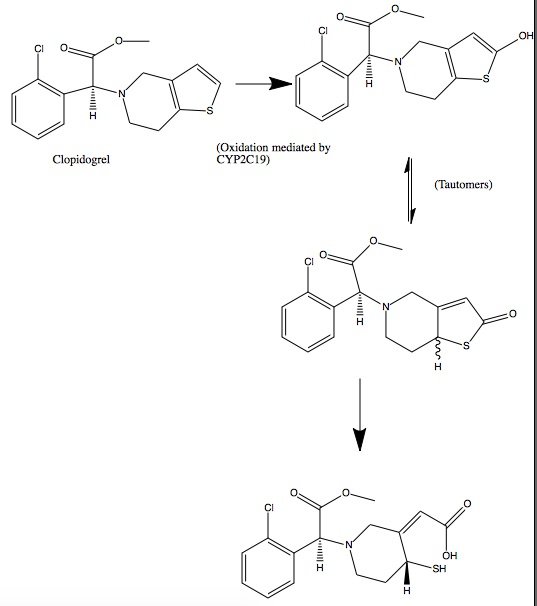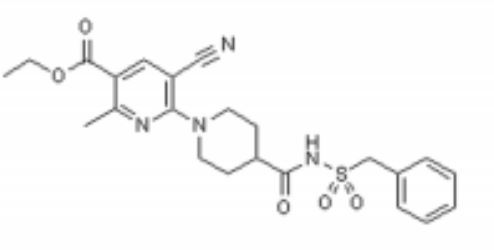Sandbox Reserved 430
From Proteopedia
(Difference between revisions)
| (2 intermediate revisions not shown.) | |||
| Line 17: | Line 17: | ||
As a member of a large class of G-protein-coupled receptors, P2Y12 is often an initial role player in signal transduction and cellular response due to external environmental factors. In the case of P2Y12, the receptor responds to ADP concentrations in the extracellular matrix and on a larger scale the blood stream. There is importance is understanding how P2Y12's structure receives ADP as an activator. In turn, knowledge of how P2Y12 is affected when properly inhibited can lead to improved drug design in terms of bioavailability, binding affinity, and effectiveness of inhibition. Ultimately, pharmaceuticals will be better able to prevent and treat cardiovascular diseases and medical conditions (thrombosis, hypercoagulable states) and more immediate dangers (stroke, embolism, and heart attacks). | As a member of a large class of G-protein-coupled receptors, P2Y12 is often an initial role player in signal transduction and cellular response due to external environmental factors. In the case of P2Y12, the receptor responds to ADP concentrations in the extracellular matrix and on a larger scale the blood stream. There is importance is understanding how P2Y12's structure receives ADP as an activator. In turn, knowledge of how P2Y12 is affected when properly inhibited can lead to improved drug design in terms of bioavailability, binding affinity, and effectiveness of inhibition. Ultimately, pharmaceuticals will be better able to prevent and treat cardiovascular diseases and medical conditions (thrombosis, hypercoagulable states) and more immediate dangers (stroke, embolism, and heart attacks). | ||
==Overall Structure== | ==Overall Structure== | ||
| - | P2Y12R is a 1 chain structure. The <scene name='48/483887/Secondary_structure/2'>secondary structure</scene> of P2Y12R consists of eight <font color='deeppink'>alpha helices</font>. Seven transmembrane alpha helices are tilted and in a bundle, while the carboxy-terminal helix VIII is parallel to the membrane bilayer. The <scene name='48/483887/Rainbow/ | + | P2Y12R is a 1 chain structure. The <scene name='48/483887/Secondary_structure/2'>secondary structure</scene> of P2Y12R consists of eight <font color='deeppink'>alpha helices</font>. Seven transmembrane alpha helices are tilted and in a bundle, while the carboxy-terminal helix VIII is parallel to the membrane bilayer. The <scene name='48/483887/Rainbow/3'>rainbow scene</scene> demonstrates how the chain goes from the <font color='blue'>N</font> to <font color='red'>C</font> termini with each helix being approximately one color each of the color scheme. |
{{Template:ColorKey_N2CRainbow}} | {{Template:ColorKey_N2CRainbow}} | ||
| - | P2Y12R contains only one < | + | P2Y12R contains only one <scene name='48/483887/4ntj_disulfide_bond/1'>disulfide bond</scene> that connects the <font color='blue'>amino terminus</font> with <font color='darkorgange'>helix VII</font>. There are also two cholesterol molecules that are bound to two receptor molecules. As displayed in this <scene name='48/483887/Binding/2'>scene</scene>, one cholesterol molecule is bound to a receptor molecule between <font color='deepbluesky'>helix III</font> and <font color='lime'>helix V</font>. Another cholesterol molecule is bound to a receptor molecule shown <scene name='48/483887/Molecule/2'>here</scene> at the interface of <font color='blue'>helix I</font> and <font color='darkorange'>helix VII</font> . |
P2Y12R has some distinctive features from other GPCR structures in its family. <font color='lime'>Helix V</font>, for example, has around two more helical turns and does not have the typical helical bend that other GPCR structures have. As mentioned above, <font color='lime'>helix V</font> is <scene name='48/483887/Helix_vii/1'>elongated and straightened</scene> because the structure lacks proline and glycine residues to destabilize its structure. Furthermore, the elongated and straightened conformation causes P2Y12R’s extracellular end to shift 6 Å closer to <font color='turquoise'>helix IV</font> compared to other class A GPCR structures. In addition, the intracellular tip of <font color='darkorange'>helix VII</font> is closer to the seven transmembrane helical bundle. <font color='gold'>Helix VI’s</font> intracellular tip is tilted slightly outward and shifted closer to the intracellular surface than other GPCR structures. | P2Y12R has some distinctive features from other GPCR structures in its family. <font color='lime'>Helix V</font>, for example, has around two more helical turns and does not have the typical helical bend that other GPCR structures have. As mentioned above, <font color='lime'>helix V</font> is <scene name='48/483887/Helix_vii/1'>elongated and straightened</scene> because the structure lacks proline and glycine residues to destabilize its structure. Furthermore, the elongated and straightened conformation causes P2Y12R’s extracellular end to shift 6 Å closer to <font color='turquoise'>helix IV</font> compared to other class A GPCR structures. In addition, the intracellular tip of <font color='darkorange'>helix VII</font> is closer to the seven transmembrane helical bundle. <font color='gold'>Helix VI’s</font> intracellular tip is tilted slightly outward and shifted closer to the intracellular surface than other GPCR structures. | ||
Current revision
| This Sandbox is Reserved from January 19, 2016, through August 31, 2016 for use for Proteopedia Team Projects by the class Chemistry 423 Biochemistry for Chemists taught by Lynmarie K Thompson at University of Massachusetts Amherst, USA. This reservation includes Sandbox Reserved 425 through Sandbox Reserved 439. |
P2Y12 Receptor in Complex with AZD1283 (4ntj)[1]
by [Cora Ricker, Lauren Timmins, Aidan Finnerty, Adam Murphy, Duy Nguyen]
Student Projects for UMass Chemistry 423 Spring 2016
| |||||||||||


